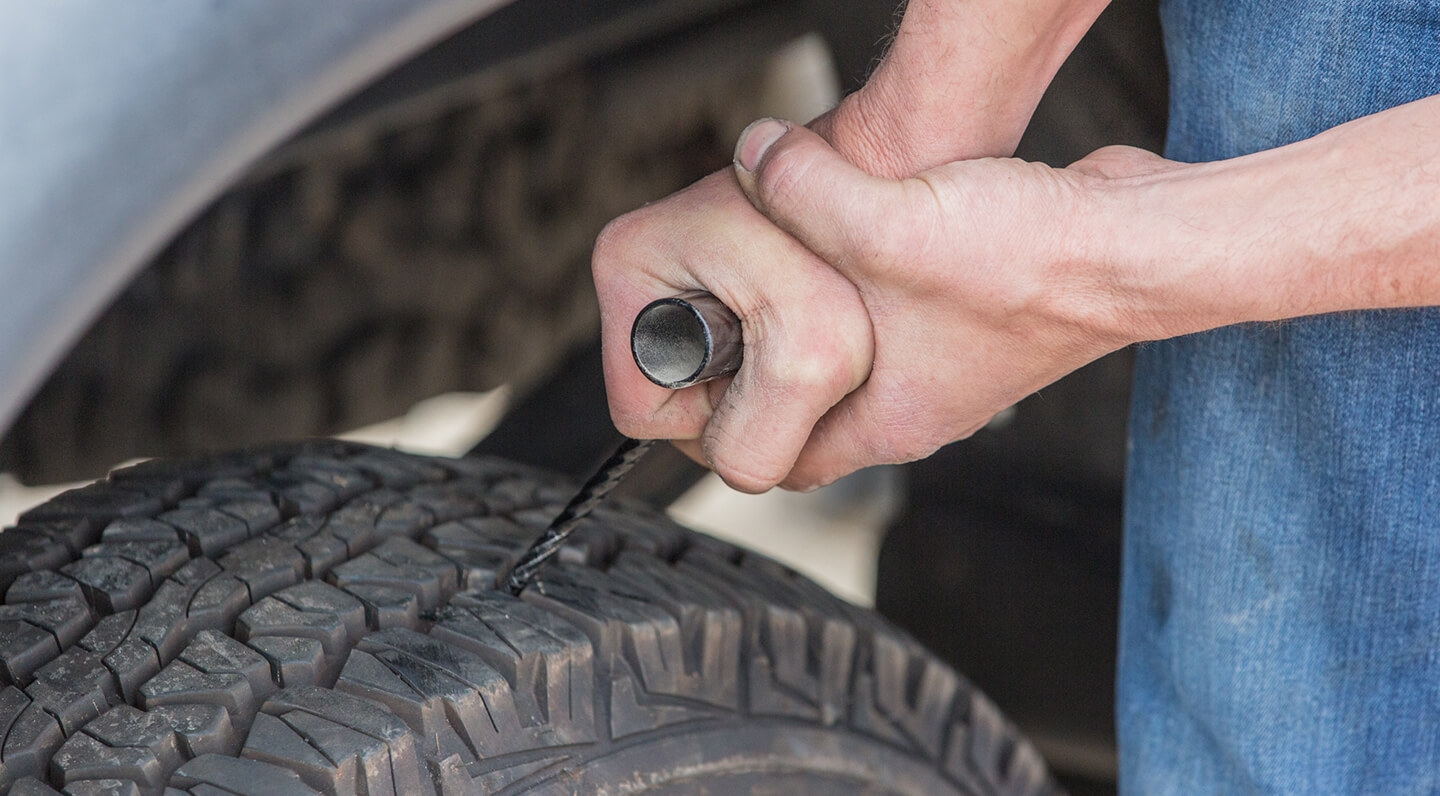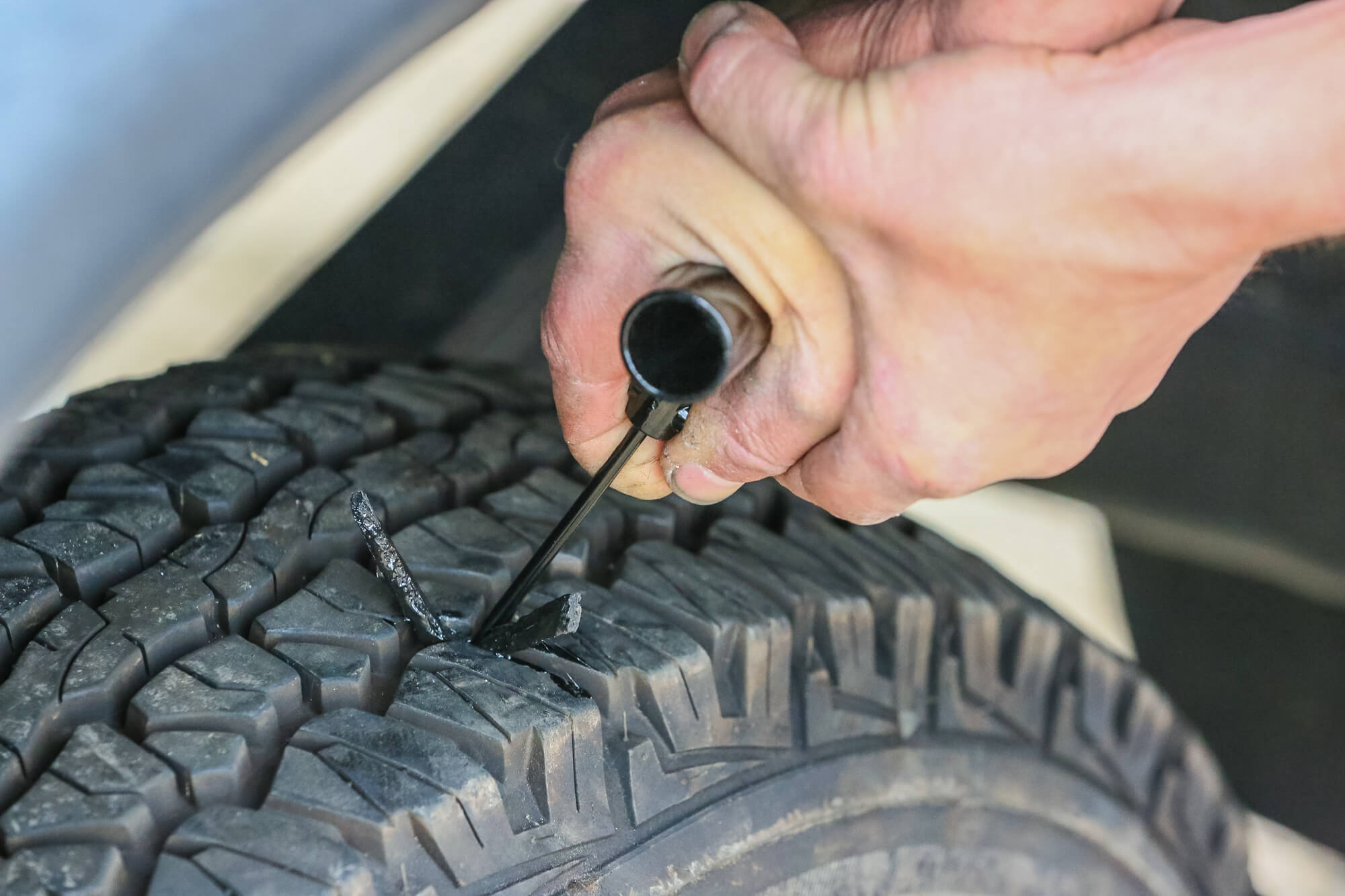
Whether you drive over road debris or go wheeling in sharp rocks like shale, flat tires happen even to the best tires. That doesn’t mean that you need to hide in the corner at home though or have AAA on speed dial. Like nearly any situation, the difference between success and failure comes down to being prepared and having the skills and knowledge necessary to address the issue at hand. Sometimes that means replacing the flat tire with your full-size spare (you do have a full-size spare tire, right?). But just as often you can plug the leaking tire and be on your way in a matter of minutes.
Swap or Plug
Whether you can safely plug a tire or not depends on how and where the tire was damaged. If you are on the road and drove at speed on the punctured tire for a significant amount of time, it is likely damaged beyond repair. In this situation, the entire sidewall becomes compromised due to excessive heat. Similarly, off-road if you tear a hole in your sidewall that you can put your fist through or pinch flat a tire (where the rim actually hits the ground and cuts the tire) your best course of action is swapping on your spare tire.
Be Prepared
Sometimes you just put a small cut in your tire. Or you are off-road without a spare or may have already used it. If you just ran over a nail on the street and notice a tire going low either visually or via the tire pressure monitor system (TPMS), that is a candidate for being plugged too. In these instances, a small, inexpensive tire plug kit makes the difference between driving home and walking. We recommend getting a kit that is specific to off-road tires, as they will have a big T-handle reamer and insertion tool, plenty of plugs, and additional items like needle nose pliers and spare valve stems.
Evaluate the Situation
There are limits to how many plugs you can put in a tire and where. If you are just trying to get off the trail, keep shoving plugs into the damage until it holds enough air to limp back to civilization. This sort of fix shouldn’t be driven down the road at highway speeds though. The heat and flexing of the tire carcass can spit the plugs out and cause a loss of control. Also, plugging a small hole in the tread surface of a tire is typically no big deal. But most tire shops won’t touch a repair on a sidewall for the reasons listed above; namely the flexing of the tire carcass and heat generated. This is unfortunate since most punctures on the trail do involve the sidewall. In these situations plan to purchase a new tire once you return home.
Plug It Up
None of that really matters, though when you are in the middle of nowhere with no phone service and have miles to go before you are back to civilization. In these scenarios, a tire plug kit is a lifesaver. Typically, you don’t even need to remove the tire and wheel from the vehicle to plug the hole in the tire. You just locate the puncture, which is easier if the item that caused the hole is still present. Remove the object, install one or more plugs into the hole, trim the plugs, and air the tire back up. If you have onboard air, we recommend removing the valve core or waiting until the tire is completely deflated before installing the plugs so there is less resistance. If you don’t have an air source, you will likely want to install the plug as quickly as possible so you don’t lose more air than necessary. Even more important is to not lose your cool. Remember, fixing a punctured tire is no biggie as long as you have the right tools and knowledge to address the situation. Flats happen, but so do fixes. Let’s walk you through how to plug a tire.

Smittybilt’s Tire Repair Kit includes everything you need to repair a flat tire and takes up hardly any room inside your vehicle. In addition to tire plugs and the related tools, they also include a tire pressure gauge, extra valve stems, a valve core removal tool, and more.

Start by locating the hole and removing the offending item if it is still present. If you can’t find the puncture, water can be useful to see where the air is escaping. It is worthwhile to circle the location with a paint pen or chalk once you have found it, so you don’t lose the spot if it isn’t obvious where it is.

On small punctures, it can be a challenge to get a plug into the hole. Smittybilt includes a reamer with a T-handle for situations like this where you actually have to make the hole larger before you can plug it. Twisting as you insert and remove the reamer makes the process easier.

Thread the vulcanized plug into the middle of the application tool with an even amount of plug on each side. The end of the tool is forked to hold a single plug in place securely. You also want to apply plenty of lubricant to the plug and the end of the tool before you use it to make it easier to slide into the puncture.

You want the plug to be about halfway inside the tire when you remove the tool. Remove the application tool by pulling straight up quickly. Don’t twist the tool when removing it from the tire. Cut the excess plug sticking out of the tire with the included pliers or a knife as close to flush with the tire as you can. Remember to take it easy on the tire especially if the plug is in the sidewall.

Unless you are lightning fast, you are going to need to air your tire up after plugging the hole. The easiest way to do this is with an onboard air system or a CO2 tank. Both are also useful for airing up your tires at the end of the trail. If you don’t have onboard air, you can hopefully get air from a friend or limp the vehicle to a service station.

Like a puncture, a damaged valve stem or losing a valve core during airing down can also result in a flat tire. Smittybilt includes spare valve stems and a valve core tool to remedy these issues. Remember, you will have to break the tire bead away from the wheel to install a new valve stem. They install from inside of the tire making breaking the bead necessary.

Smittybilt’s Tire Repair Kit also includes tire patches and baling wire for larger tire damage. On some sidewall gashes you can sew the tire back together and then install plugs to keep it from leaking. These are very involved repairs that should only be used as a last resort to get off of the trail. But it is nice to know that you have the required tools and equipment should that be necessary.




2